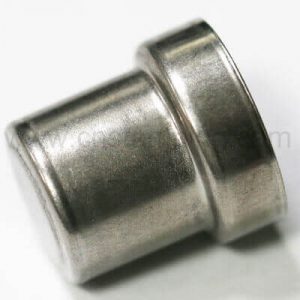How Sensors Drive the Future of Electrification and Autonomous Driving
Modern cars are no longer simply means of transportation. They are evolving into intelligent robots that integrate perception, decision-making, and execution. The cornerstone of this transformation is the ubiquitous automotive sensors—the vehicle’s “eyes,” “ears,” and “nerve endings.” With the explosive growth in demand for sensors for electric vehicles and autonomous driving, the importance of these precision automotive stamping components has never been greater.
Core Categories and Applications of Automotive Sensors

On the road to higher levels of autonomous driving, a variety of sensors are performing their respective functions and working in concert.
Vision System: The Car’s “Sharp Eyes”
Cameras serve as essential vision sensors by detecting lane markings, traffic signs, pedestrians, and vehicles. Multi-camera systems offer drivers a 360-degree surround view. High-performance automotive camera vision systems are crucial for supporting entry-level assisted driving and parking assistance features.
Radar: An all-weather “reliable feeler”
Millimeter-wave radar is not affected by adverse weather conditions like rain, snow, and fog, allowing it to accurately detect the distance and speed of objects. It is mainly used in adaptive cruise control and blind-spot monitoring systems. Engineers looking for automotive radar sensors appreciate its reliable performance in complex environments.
LiDAR: A High-Precision “3D Paintbrush”
LiDAR technology utilizes laser beams to create a real-time 3D point cloud map of the surrounding environment. This provides highly accurate information about contours and distances. LiDAR is a crucial element of the advanced sensor suite used in autonomous driving. It enable vehicles to perceive their surroundings in ways that exceed human vision. Consequently, LiDAR sensors for cars have become a central focus in the technology sector.
Body and Chassis Sensors: The unsung heroes of safety and performance.
Tire pressure monitoring sensors (TPMS) directly measure tire pressure and temperature. It plays a vital role in active safety and significantly impacting the range of electric vehicles.
Position, speed, and pressure sensors are commonly used in motors, batteries, brakes, and suspension systems to ensure precise control and efficient operation of vehicle components.
Why Choose a Professional Automotive Sensors Supplier?
In today’s highly competitive market, partnering with a dependable automotive sensor supplier is essential. A top-tier Original Equipment Manufacturer (OEM) sensor manufacturer should have the following qualities:
- System-Level Knowledge and Experience: A comprehensive understanding of how sensors interact within the entire vehicle system, rather than focusing solely on individual components.
- High Reliability and Durability: The capability to produce dependable car sensors that can endure extreme temperatures, vibrations, and electromagnetic interference.
- Innovative Research and Development Capabilities: A commitment to continuous investment in next-generation sensor technologies that are smaller, more efficient, and cost-effective.
- Global Support and Supply Chain Resilience: The ability to ensure stable and timely delivery of high-quality products worldwide.
From improving the energy efficiency of electric vehicles to paving the way to fully autonomous driving, automotive sensor technology is at the center of innovation. Investing in the right, reliable sensor solutions is investing in the future competitiveness of your products.
Are you looking for cutting-edge perception capabilities for your next-generation vehicle platform? Contact us today to learn about our comprehensive automotive sensor supplier solutions and collaborate with us to shape the future of intelligent mobility.
